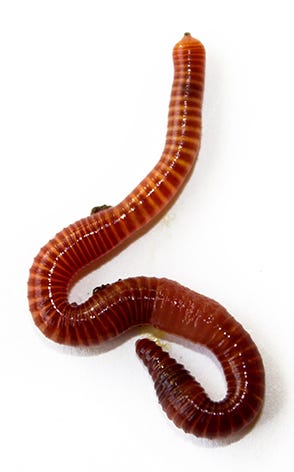The Single Strategy To Use For Red Wiggler Express
Table of ContentsThe smart Trick of Red Wiggler Express That Nobody is DiscussingThe Facts About Red Wiggler Express RevealedThings about Red Wiggler ExpressThe Only Guide to Red Wiggler ExpressThe Definitive Guide to Red Wiggler Express
And the growing Red Worm population? Even in the load that was set up directly in front of yard composters with existing Red Worm swarms.
Numerous selections, including Red Wigglers, European Nightcrawlers, and Lumbricus types were brought over from the European continent. However here's the thingNative or otherwise - and as skilled as they go to having the ability to make it through in a wide-range of environments and conditions -. In other words, they are much more most likely to hang out in any kind of active composting systems you have actually established up, than they are to wander off and begin spoiling the setting.
Origins need oxygen for respiration and rely upon smooth airflow within the dirt to prosper. When it rainfalls, soil can end up being saturated with water, minimizing the oxygen readily available and preventing nutrition absorption. To keep an optimal equilibrium, the soil must permit water to drain pipes sufficiently, leaving sufficient area for air to support root health
The Single Strategy To Use For Red Wiggler Express

When it involves worms for composting, what enters your mind? If you were an earthworm breeder, supplier, or simple garden enthusiast, then you would certainly understand that red wiggler worms are the optimal worms for vermicomposting. For more information regarding these planet marvels, gone through some of the red worm truths below.
Not known Details About Red Wiggler Express
What do worms consume? Well, these red wriggler worms can be fed with kitchen scraps and yard wastes. Any kind of decaying organic stuff will do like vegetable and fruit peels, smashed egg shells, made use of tea bags, coffee grounds, lawn cuttings, completely dry leaves, and others. Make certain not to feed them foods that are oily, citrusy, or has meat or dairy products in them.

This behavior makes them fit forever in worm bins, compost stacks, and other constrained areas where organic waste is bountiful. Creating an ideal setting for red wigglers calls for a thoughtful strategy. Consider the following necessary aspects to care for red wigglers at home and ensure their wellness: Use a bed linens of shredded newspaper or cardboard.

Add a handful of completely dry, shredded newspaper if the bin ends up being as well wet. Without a doubt, they do! Red wiggler worms recreate by laying tiny, lemon-shaped eggs in protective cocoons. These cocoons are usually deposited in the bedding and hatch right into infant worms within a couple of weeks. The quick recreation cycle of red wigglers is one of the reasons they are preferred for vermicomposting.
All about Red Wiggler Express
Their versatility and strength have made them a prominent selection for vermicomposting in different areas around the world. Think about safety steps for really extreme temperatures such as: Protecting the worm bin with layers of straw or leaves. Red Wiggler Express.

When caring for your red wigglers it is very important to keep in mind to: 1) K.I.S.S (Maintain it Simple) and 2) every little thing in small amounts. These policies put on feeding your compost worms, watering your worm bins, and simply concerning whatever else involved in caring for them. Simply bear in mind - you can constantly add more food later on (yet it's tough to remove feed once it's been included in a bin!).
Due to the fact that I fed the red wigglers and compost worms way too much, they weren't able to maintain and over time the older food went leftover and produced anaerobic conditions that killed the worms. The great information is that there are extremely easy actions you can require to ensure this does not happen! Below're the 6 golden rules for just how usually and exactly how much to feed your worms: Guideline # 1: Small amounts! You can always add even more food later on.
Our Red Wiggler Express Statements
Uneaten food will lead to anaerobic conditions that will kill your live worms. Regulation # 6: After the first feeding, feed the worms 1/3 to 1/2 of their weight.
Comments on “Our Red Wiggler Express Diaries”